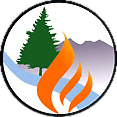Flagstaff Watershed Protection Project’s Biannual Report summarizes accomplishments in Implementation, Outreach, Monitoring, FWPP In the News and Financial Leverage from Jan.-June 2016. For full report see Biannual Report_Jan-June 2016_Final_I
Best Management Practices Used to Minimize Impacts to Soils, Water Resources and Trails
Ground-based thinning activities using mechanized equipment require the use of existing forest roads and the construction of new temporary roads to facilitate access to timber stands. In addition, whole-tree skidding of harvested trees requires a network of skid trails ending at landings where trees are delimbed and loaded onto trucks for transport to processing sites (mills, bioenergy facilities, etc.). These activities cause various types of disturbance to soils and ground cover that are mitigated through use of best management practices, known as “BMPs.” Fore more see: Best Management Practices_Final
Harvesting Methods Open House & Firewise Landscaping Contest – Two Exciting Upcoming Events –
The Greater Flagstaff Forests Partnership (GFFP) is pleased to announce an exciting free public event: Harvesting Methods & Wildfire Preparedness Open House on May 7th from 10:00 AM – 1:00 PM at the Aquaplex in Flagstaff. As the pace and scale of forest restoration efforts increase throughout the area, this is an opportunity for the community to experience and learn about the various harvesting methods and the measures taken by professionals to reduce the risk of severe wildfires in our forests. Residents will also have the opportunity to gain valuable insight on how to protect their homes, property, and family from wildfire. Various agencies and organization will be available to discuss upcoming forest treatment operations, Firewise principles, and answer questions. Exhibits include: photo opportunities with lumberjacks, firemen, equipment/trucks; timber sports, forest treatment operations’ videos, a kid’s corner, and refreshments. This event is sponsored by the Fire Adapted Community Learning Network and is held in conjunction with the National Community Wildfire Preparedness Day. For more info. see: May7OpenHouseFlyerFinal
The Greater Flagstaff Forests Partnership and the Fire Adapted Communities Learning Network are hosting a Firewise Landscaping Contest! The contest recognizes homeowners’ efforts in creating a Firewise home in their community, while also demonstrating that Firewise landscaping can be beautiful as well. For more info. see: FLC Flyer 1_Final
FWPP What’s Going on Out There?
Includes background information and what implementation of forest treatments means in the Dry Lake Hills project area of FWPP: 1) marking trees with paint, 2) cutting and hauling trees, 3) prescribed fire, 4) rehabilitation of trails, roads, and 5) monitoring of impacts through best management practices. For more info: FWPP_Implmt_Tree_Paint_Whats_Going_On_Final
Trail Closures and Reroute Map – Orion Timber Sale – Dry Lake Hills
Please see the following map for trail closures and reroute map – Orion Timber Sale – Dry Lake Hills Orion_TS_Trail_ReRoute_Map
Flagstaff Watershed Protection Project work continues – Orion Timber Sale
A forest thinning operation associated with the Flagstaff Watershed Protection Project (FWPP) in an area south of the San Francisco Peaks along Schultz Pass Road could begin as early as tomorrow. For more click here: FWPP-Orion News Release
Forest Thinning & Harvesting Operations – Observatory Mesa
For a pictorial summary of harvesting operations on Observatory Mesa see: Observatory Mesa
FWPP Mexican Spotted Owl Monitoring Report 2015
This report is provided by: USDA Forest Service – Coconino National Forest, Flagstaff Ranger District
The FWPP project proposes landscape scale restoration that has the potential to affect more than 15 known Mexican Spotted Owl (MSO) protected activity centers (PACs). PACs are intended to sustain and enhance areas that are presently, recently or historically occupied by breeding MSOs, and must be at least 600 acres (USFWS 2012). A PAC is not intended to encompass the entire home range of an owl (USFWS 2012). For more information about the MSO, please refer to the 2012 Recovery plan for the Mexican Spotted Owl (Strix occidentalis lucida), First Revision,
(USFWS 2012).
Included in this report are the results of the Flagstaff Ranger District 2015 MSO monitoring and inventory for the FWPP project area. For full report click here: 2015 FWPP MSO Monitoring Report_Final
Observatory Mesa Harvesting Operations – Lessons Learned Using a DxD Cutter Select Method
In the summer/fall of 2015, 475 acres of Section 18, part of the Observatory Mesa Natural area, owned by the City of Flagstaff, were mechanically harvested as part of the Flaggstaff Watershed Protection Project (FWPP). Fore more: FWPP-Obs Mesa_Sec 18_Lessons Learned
Harvesting Methods Fact Sheets & Poster
Six harvesting methods fact sheets that describe: 1) Prescribed fire, 2) Steep slope equipment, 3) Cable logging, 4) Helicopter logging, 5) Traditional ground based equipment, and 6 Hand thinning are available: SteepSlope – Final_I Prescribed Fire – Final_I Helicopter Logging – Final Hand Thinning – Final Ground Based – Final CABLE LOGGING – Final_I.
In addition a harvesting methods poster/display is available for events Harvesting Methods Poster Poster – Final.
The fact sheets and poster assist understanding the various types of harvesting methods that are necessary to continue treating our forests at an increased pace and scale.

